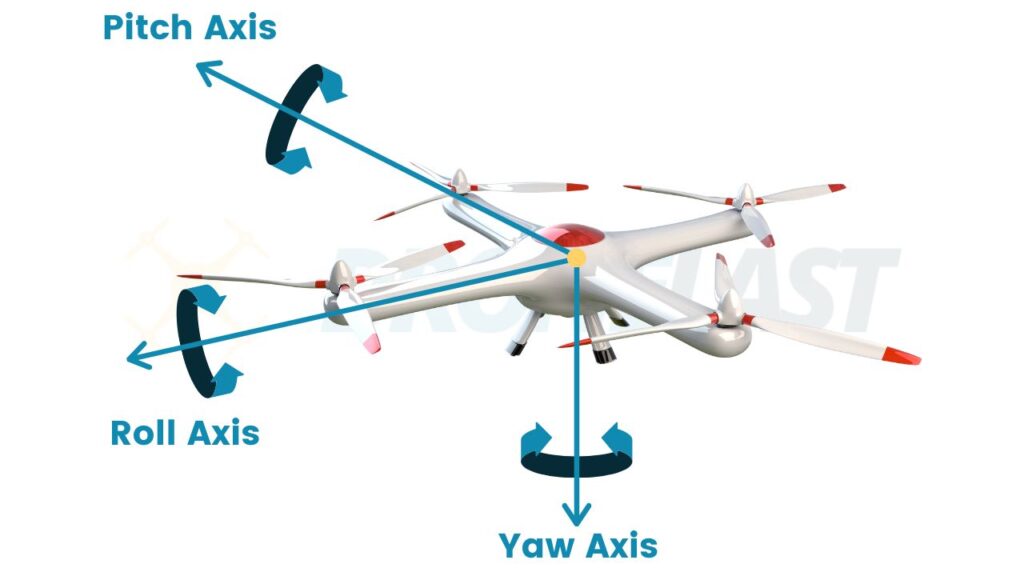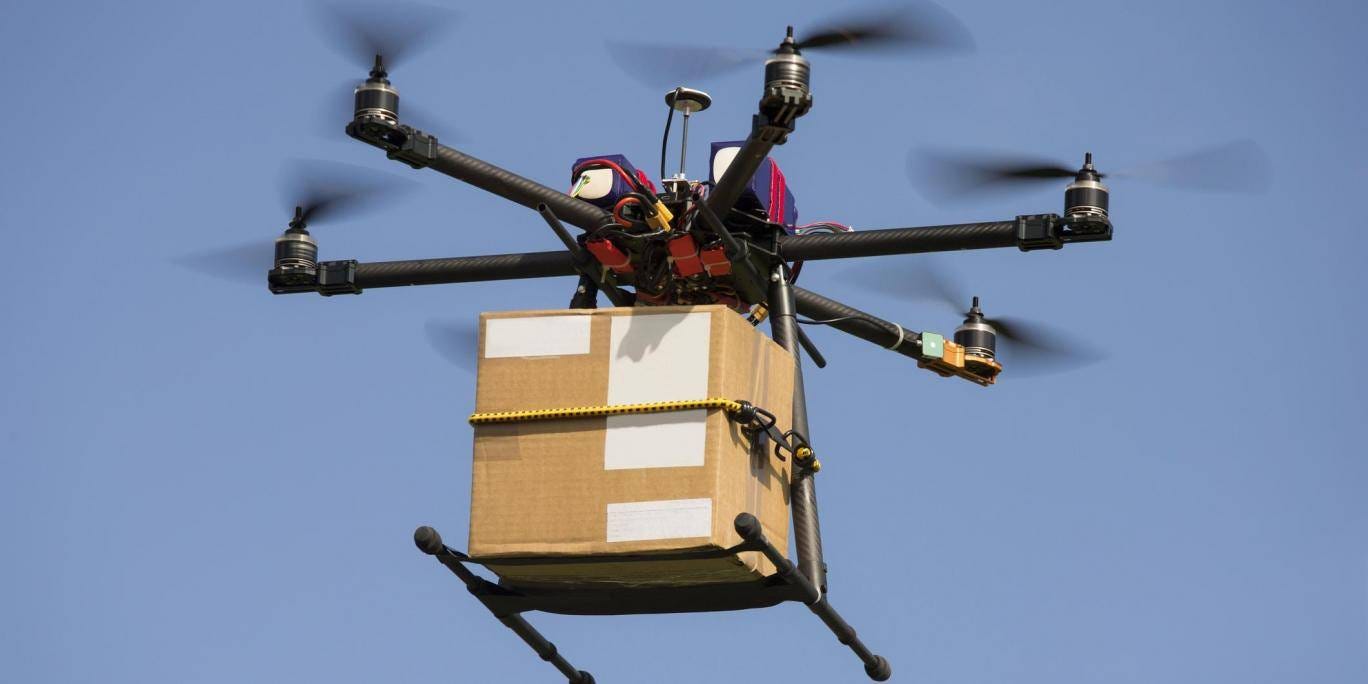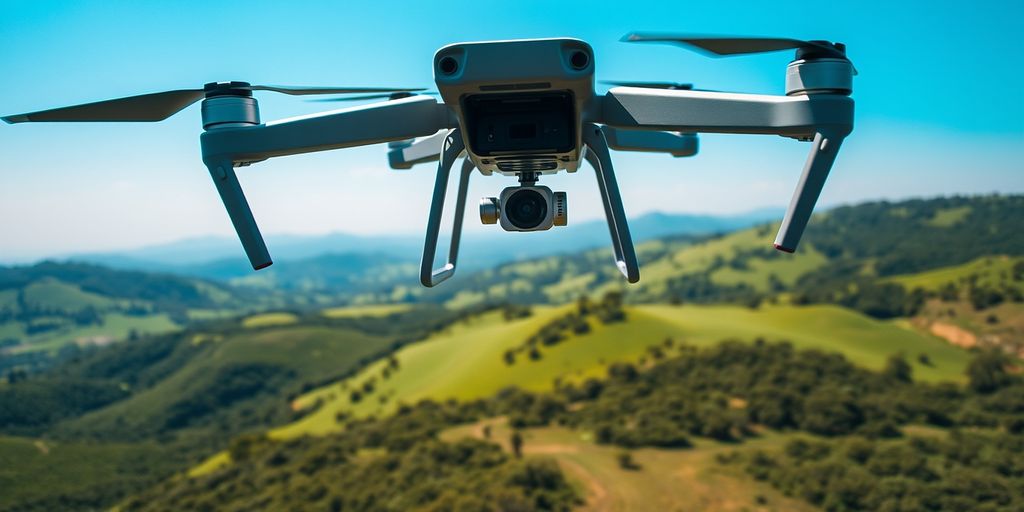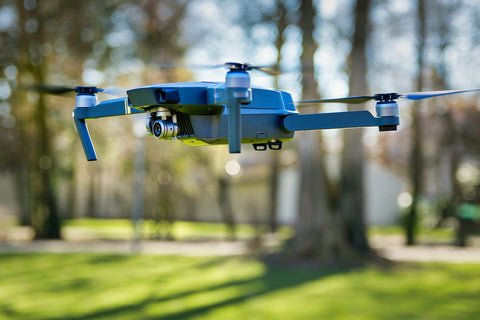Introduction
Discovering the world of drones can be an exhilarating experience! Whether you’re a curious newbie or someone looking to refine your flying skills, understanding drone technology is key. Drones have revolutionized the way we capture images, gather data, and even deliver packages. It’s no wonder they’re increasingly popular among hobbyists and professionals alike. 🌍✈️
Why Drones Are Exciting
The potential of drones goes beyond just fun; they can serve multiple purposes, such as:
- 📷 Aerial photography and videography
- 🚚 Package delivery
- 🔍 Agricultural monitoring
- 📏 Surveying and mapping nature
Imagine soaring high above landscapes to capture breathtaking views or using a drone to inspect hard-to-reach places. Every flight experience teaches you something new, whether about the drone’s capabilities or your own flying finesse.
What to Expect in This Guide
This guide aims to equip you with the knowledge you need to become a confident drone pilot. By the end, you’ll learn:
- How to choose the right type of drone for your needs
- Essential flying techniques to master takeoff and landing
- Safety measures to ensure every flight is accident-free
Most importantly, you’ll discover that flying a drone isn’t just about the gadget; it’s about the adventure and memories you create along the way. 🥳 So, buckle up and let’s take this journey to the skies together!

Understanding Drones
Now that you’re excited about the journey ahead, let’s dive into what makes drones so fascinating! Understanding drones is the first step toward mastering your flying skills and capturing stunning visuals.
What Exactly Is a Drone?
At its core, a drone is an unmanned aerial vehicle (UAV) that can fly autonomously or through remote control. Drones come in various shapes and sizes, meticulously designed for different purposes. Some common categories include:
- Consumer Drones: Perfect for hobbyists and photographers. Think about those compact models that fit right into your backpack.
- Commercial Drones: Used in agriculture, delivery services, or construction. These might have more sophisticated features and higher price tags.
- Racing Drones: Built for speed and agility, they provide thrilling racing experiences for enthusiasts.
How Do Drones Work?
Drones operate using several key components, including:
- The Body: This houses all key parts, like the camera and battery.
- Propellers and Motors: These enable flight and maneuverability.
- Sensors: Essential for stabilization and navigation, sensors help drones understand their environment and prevent collisions.
- Remote Control or Smartphone App: These allow you to communicate with your drone while in the air.
For instance, I remember the first time I took my drone out to shoot a sunset. The colors were mesmerizing, and the feeling of piloting something that danced in the air was liberating. Understanding these components not only adds to the thrill of flying but also helps you troubleshoot issues effectively. As you grasp the basics, you’ll be better equipped to make informed choices about flying safely and capturing those breathtaking moments. Let’s move to the next step—choosing the right drone for your needs! 🚀

Choosing the Right Drone
With a solid understanding of what drones are and how they work, it’s time to tackle a crucial decision: choosing the right drone for your needs. 🛩️ The market is full of options, and the right choice can make all the difference in your flying experience.
Consider Your Purpose
First things first, think about what you want to use the drone for. Different activities call for different types of drones. Here are some common purposes to consider:
- Photography and Videography: If capturing stunning landscapes or documenting events excites you, look for drones with high-resolution cameras and stabilizing features.
- Racing: For those seeking adrenaline, racing drones are fast and agile; just ensure you have the skills to keep up!
- Surveying or Inspection: These tasks require drones that can carry heavier payloads and have specialized sensors.
Weigh the Key Features
Once you’ve identified your purpose, it’s essential to evaluate specific features. Think about:
- Camera quality: Look for at least 1080p or higher.
- Flight time: Consider how long you want to stay airborne; 20–30 minutes is generally standard.
- Range: How far do you need to fly? Some drones can go up to several kilometers!
As an example, I started with a beginner-friendly drone that had a decent camera and easy control features. It helped me build confidence before I invested in a more advanced model.
Budget Wisely
Set a budget based on your needs and the features that matter most to you. Remember, a higher price doesn’t always guarantee a better experience! Whether you want a high-flying adventure or just to capture beautiful moments, taking the time to choose the right drone sets the stage for countless exhilarating flights ahead! 🥳 Ready to soar? Let’s move on to essential flying techniques!

Essential Drone Flying Techniques
Now that you’ve chosen the perfect drone, it’s time to get it off the ground! Mastering essential flying techniques will elevate your skills and ensure your flying experience is both enjoyable and safe. Let’s break this down into takeoff, landing, and navigating in the air.
Mastering Takeoff and Landing
Taking off and landing might seem basic, but they are crucial skills every drone pilot must master. Here are some tips to get you started:
- Choose a Clear Area: Always take off and land in an open space away from obstacles, people, and pets.
- Pre-flight Check: Ensure everything is functioning well, including batteries, cameras, and propellers.
When you’re ready to launch, gently push the throttle up to lift off. Keep it steady; abrupt movements can cause a tumble. Landing can be trickier. As you descend, gradually decrease the throttle and aim for a smooth touchdown. I remember my first landing—it was a bit too quick, and I almost tipped over! Here’s what helped:
- Monitor Altitude: Keep an eye on your altitude while descending.
- Controlled Descent: Lower the throttle smoothly to avoid any jerky landings.
Navigating in the Air
Once you’re in the air, navigation becomes your next focus. Here’s how to navigate confidently:
- Practice Basic Movements: Forward, backward, left, and right. Use gentle sticks to make smooth turns.
- Understand Orientation: Know your drone’s orientation (front vs. back) to avoid disorientation mid-flight.
- Use GPS Features: Many drones come with GPS navigation that can help stabilize your flight and return home easily.
The first time I flew, navigating and keeping my drone level felt daunting. But with practice, I gained confidence. Now, I can even perform smooth aerial maneuvers! With these essential techniques in your toolkit, flying will become second nature. Next up, let’s dive into safety measures to ensure every flight is a successful one! 🚀

Drone Safety Measures
With your flying skills on the rise, it’s crucial to prioritize safety as you embark on your aerial adventures. Drone safety measures help protect not only your equipment but also those around you. 🛡️
Follow the Guidelines
Before you even launch, familiarize yourself with local regulations and guidelines specific to drone flying. This can save you from potential legal troubles down the road! Here’s a quick checklist:
- Know the No-Fly Zones: Identify areas where drone flying is restricted, such as airports and national parks.
- Altitude Limits: Stay under the recommended altitude to avoid air traffic and maintain safety.
- Understand Right of Way: Always yield to manned aircraft.
Pre-Flight Safety Checks
Conducting a thorough pre-flight check ensures everything is in optimal condition. Here are steps you shouldn’t skip:
- Battery Health Check: Ensure your batteries are fully charged and functioning well.
- Control Calibration: Calibrate your drone before every flight to ensure accurate control.
- Inspect Physical Damage: Check propellers and the drone body for any signs of wear or damage. A cracked prop can lead to disaster mid-flight!
During my initial flights, I learned the hard way that skipping these checks can lead to unexpected crashes. Now, I can’t fly without my checklist!
Practice Situational Awareness
Stay aware of your surroundings while flying. Always keep an eye out for people, animals, and obstacles. This is crucial for avoiding mishaps and keeping your drone intact. By integrating these safety measures into your routine, you’ll fly with confidence, knowing you’re doing everything possible to enjoy a worry-free experience. Now, let’s ensure you’re ready for takeoff with a detailed pre-flight checklist! 🛩️

Pre-flight Checklist
With safety measures in mind, having a solid pre-flight checklist is essential for every successful drone adventure. This quick routine will help you stay organized and ensure that everything is in working order before you take to the skies. 🗒️✈️
Essential Items to Check
Here’s a handy list of things to review before launching your drone:
- Battery Status: Always check the battery level of both the drone and the remote controller. A low battery can lead to unexpected landings!
- Firmware Updates: Confirm that your drone’s software is up to date. A quick update can prevent issues and improve performance.
- Camera Settings: If you’re capturing photos or videos, check that your camera settings are configured correctly, including resolution and frame rate.
After a few flights, I realized how crucial these checks were. The first time I forgot to charge my battery, I had to cut my flight short! Now, I double-check everything to avoid interruptions.
Physical Inspection
Inspect your drone for any signs of damage:
- Propellers: Ensure they are undamaged and securely attached.
- Body: Look for any cracks or loose components.
- Gimbals and Cameras: Make sure the gimbal is functioning well and the camera is secure.
Flight Area Assessment
Lastly, scout your flight area before taking off. Ensure it’s safe and free from obstacles. Look for:
- Open Space: Avoid congested areas with people or structures.
- Weather Conditions: Check the weather forecast for wind speeds and precipitation. Flying in windy conditions can be tricky!
Completing this pre-flight checklist will set you up for a smooth and safe flying experience. Now that you’re organized and ready, let’s explore the exciting advanced features your drone may have to enhance your flights! 🚀

Exploring Advanced Features
With your pre-flight checklist complete and your confidence growing, it’s time to take your flying skills to the next level by exploring some of the advanced features your drone may offer. These functionalities can elevate your aerial experience and enhance your photography or videography. 🎥✨
Automatic Flight Modes
One of the most exciting aspects of modern drones is their automatic flight modes. These features allow you to focus more on capturing stunning footage rather than stressing over controls. Check out these popular modes:
- Follow Me: This mode lets the drone autonomously follow your movements, ideal for capturing action shots or creating dynamic videos.
- Waypoint Navigation: Plan your flight path in advance, and the drone will autonomously follow it. I once used this feature to capture a scenic route that I could never fly manually—I got some breathtaking shots!
Advanced Camera Capabilities
Many drones come equipped with sophisticated cameras that can take your photography to new heights. Key camera features to explore include:
- 4K Video Recording: Capture high-definition video for stunning clarity.
- Obstacle Avoidance: Some drones have sensors that detect obstacles, helping you to navigate safely.
- High Frame Rates: Useful for slow-motion captures, giving your footage a cinematic effect.
Remember when I tried a new drone that had an impressive camera? The first time I captured a sunset shot in 4K quality, I was blown away by the details!
Smartphone Integration
Many drones now support smartphone integration. You can manage settings effortlessly and stream live footage directly to your device. Don’t forget to download your manufacturer’s app to unlock these features! These advanced functions will not only make your flying experience more intuitive but also allow you to create captivating content. Ready to capture some breathtaking aerial footage? Let’s delve into tips for getting those stunning shots! 📸🌅

Capturing Stunning Aerial Footage
Now that you’re familiar with advanced features and ready to take to the skies, let’s discuss how to capture stunning aerial footage that will leave everyone in awe! 🎥🌄 The right techniques can turn an average flight into a breathtaking visual experience.
Plan Your Shots
Before you even hit the launch button, take some time to plan your shots. Consider the following:
- Location: Find a visually appealing environment, be it a scenic landscape, urban setting, or action-packed event.
- Golden Hour: Shoot during sunrise or sunset. The soft light creates beautiful colors and shadows, enhancing your footage dramatically.
I remember soaring over a lake during sunset, and the golden reflections on the water were nothing short of magical!
Camera Settings Matter
Optimizing your camera settings is crucial for high-quality footage. Here are some tips to get started:
- Use the Right Frame Rate: For smooth video, aim for 24 or 30 fps. For slow-motion shots, go higher at 60 fps or more.
- Adjust Resolution: Shooting in 4K is ideal for capturing detail and allows for cropping during editing without losing quality.
- Stabilization: Take advantage of features like gimbals or electronic stabilization to keep your shots steady.
Experiment with Angles and Movements
Play around with different angles and flight paths for unique perspectives. Consider the following techniques:
- Dolly Zoom: Fly backward while adjusting the zoom to create that captivating warp effect.
- Reveal Shots: Start behind an object (like trees) and then fly above or around it to reveal a stunning landscape.
Embrace your creativity! Capturing stunning aerial footage is all about exploration and experimentation. So grab your drone, map out your shots, and let your imagination take flight! 🎈✨ Next, let’s tackle how to troubleshoot common issues you may encounter while flying.

Troubleshooting Common Issues
With the thrill of capturing stunning aerial footage comes the inevitable hiccups that can occur while flying. Don’t worry—troubleshooting common issues is all part of the learning process, and I’ve been there too! Let’s dive into some frequent problems and their solutions. 🚁🔧
Lost Signal
One of the most common issues drone pilots face is losing signal during flight. This can be alarming, but here’s how to handle it:
- Stay Calm: Panicking won’t help. Take a deep breath.
- Return to Home (RTH): Ensure your drone is equipped with this feature. It can automatically fly back to your takeoff point when the signal gets weak.
- Check your surroundings: Avoid flying in areas with lots of obstacles or electronic interference, like urban environments.
I remember the first time my drone lost signal over a park. My heart raced, but hitting the RTH button brought it back effortlessly!
Battery Issues
Battery issues can also lead to an abrupt end to your flight. Here’s how to avoid trouble:
- Monitor Battery Levels: Keep an eye on battery life during your flight. You don’t want to be left scrambling for a safe landing!
- Calibrate the Battery: Before each flight, ensure your battery is calibrated for accurate readings.
Camera Problems
If your camera isn’t functioning as expected, try these solutions:
- Check Connections: Make sure all cables (if any) from the camera to the drone are securely connected.
- Settings Reset: If the footage quality is off, resetting camera settings to default can sometimes fix the issue.
Experiencing these issues can be super frustrating, but they’re manageable with some preparation and quick troubleshooting. With time, you’ll develop the skills to handle these challenges confidently. Now that we’ve addressed potential pitfalls, let’s explore the vibrant communities you can join to connect with fellow drone enthusiasts! 🌍✨

Joining Drone Communities
After navigating the skies and troubleshooting common issues, one of the best ways to enhance your drone experience is by joining drone communities. These groups offer invaluable support, advice, and camaraderie that can take your flying skills to the next level. 🌍🤝
Why Join a Drone Community?
Being part of a drone community has several perks, including:
- Networking: Connect with fellow drone enthusiasts who share similar interests and experiences. You can make friends, find mentors, or collaborate on exciting projects.
- Skill Development: Learn from others through tips, tutorials, and shared experiences. Many members are more than willing to help with specific challenges you might face.
- Event Participation: Communities often organize meet-ups, races, or photo contests, providing opportunities to practice and showcase your skills.
I remember the first time I attended a local drone meet-up; it was amazing to see different drone models in action and pick up new flying tips from seasoned pilots!
Where to Find Drone Communities
Finding the right community is easier than ever. Here are some popular platforms where you can connect with others:
- Online Forums: Websites like DJI Forums or DronePilots.net cater specifically to drone enthusiasts.
- Social Media Groups: Platforms like Facebook and Reddit have numerous groups focused on specific drone brands or general drone flying.
- Local Clubs: Check for local drone clubs in your area through Google or Meetup.com.
Joining drone communities not only enriches your flying experience but also provides a sense of belonging to a vibrant network of like-minded individuals. Before you know it, you’ll be sharing your own tips and tricks with newcomers! Ready to dive into the legal regulations for drone flying? Let’s explore that next! 🛩️📜

Legal Regulations for Drone Flying
As you become more engrossed in the world of drones and connect with fellow enthusiasts, it’s crucial to understand the legal regulations governing drone flying. These rules exist to ensure safety for all, including both pilots and the general public. So, ready to learn about what you need to know? 📜✈️
Why Compliance Matters
Following legal regulations is essential for several reasons:
- Safety: Compliance helps prevent accidents or hazards, keeping both you and others safe while enjoying your hobby.
- Legal Protection: Adhering to rules can protect you from hefty fines or legal actions. No one wants to deal with unnecessary trouble!
- Community Reputation: Being a responsible drone pilot fosters a positive image of the drone community.
Key Regulations to Know
While regulations can vary significantly from one country to another, some common points you should pay attention to include:
- Registration: In many countries (like the U.S.), drones over a certain weight must be registered with aviation authorities.
- Altitude Limits: Generally, you are not allowed to fly above 400 feet to avoid conflicts with manned aircraft.
- No Fly Zones: Be aware of restricted areas, such as airports, military bases, and crowded events. Always check local laws before flying.
When I first started, I made it a point to familiarize myself with these regulations. I remember being surprised at how many restrictions existed around urban areas!
Stay Informed
Regulations are constantly evolving. Keeping up to date by checking resources like the FAA (in the U.S.) or your local aviation authority is wise. Many communities also share updates and changes in local laws, so your peers can be a valuable resource. Understanding and following legal regulations ensures that you can enjoy flying your drone while being a responsible part of the broader community. Now, as you embrace your drone journey, let’s talk about upgrading your skills! 🛩️🌟

XII. Upgrading Your Drone Skills
As you navigate the exciting world of drone flying, continuous improvement is key to becoming a more proficient pilot. Upgrading your drone skills not only enhances your flying experience but also boosts your confidence in capturing stunning aerial footage. Let’s explore some effective ways to take your skills to the next level! 🚀📈
Practice, Practice, Practice
The most effective way to upgrade your skills is simply to keep flying. Here’s how to maximize your practice time:
- Set Specific Goals: Instead of just flying around, set specific objectives for each session—like mastering certain maneuvers or learning to fly in different weather conditions.
- Try New Techniques: Experiment with different flight modes and camera settings to gain a deeper understanding of what your drone can do.
I dedicated one session to perfecting my drone’s yaw turns and was surprised by how quickly I improved when I focused on that single skill!
Take Online Courses
Online courses specifically designed for drone flying can provide structured learning. Platforms like Udemy and Skillshare offer various tutorials on topics ranging from basic operations to advanced cinematography techniques.
- Look for Certified Instructors: Courses led by experienced pilots can offer insider tips and tricks that you won’t get elsewhere.
- Join Workshops or Groups: Local workshops can provide hands-on training and valuable feedback from professionals.
Engage in Community Challenges
Many drone communities host challenges or competitions that can motivate you to try new things. Participating not only sharpens your skills but can also expose you to new styles of flying and filming. I remember my first community photo challenge; it pushed me to think creatively about my shots, resulting in some of my best aerial photography yet! By continually upgrading your skills, you’ll unlock new possibilities and make the most out of your drone flying adventures. As you progress, let’s ensure your drone stays in top shape by discussing maintenance tips next! 🛠️✨

XIII. Maintaining Your Drone
After investing time in upgrading your drone skills, it’s essential to ensure that your flying companion remains in peak condition. Proper drone maintenance not only maximizes performance but also extends the life of your equipment. So, let’s dive into some essential maintenance tips! 🛠️✨
Regular Inspections
Before each flight, conduct a thorough inspection of your drone. Here’s a checklist to guide you:
- Propellers: Check for cracks or chips. A damaged propeller can lead to unstable flights.
- Body and Landing Gear: Look for any signs of wear and tear or loose components; these can affect your drone’s performance.
- Battery Health: Inspect the battery for swelling, corrosion, or any signs of damage. A well-maintained battery is crucial for a safe flight.
When I started, I learned the hard way that neglecting a propeller check led to a minor crash during a flight. Since then, I’ve made it a habit to check my drone before every outing!
Cleaning Your Drone
Keep your drone clean for optimal performance. Use a soft cloth or brush to remove dirt, dust, and debris:
- Camera Lens: Use a microfiber cloth to avoid scratching the lens, as a clean lens is essential for clear footage.
- Motors: Ensure no debris is clogging the motors; keep them free from any blockages for smooth operation.
Battery Care
Follow best practices for battery care:
- Charge Properly: Use the manufacturer’s suggested charger and avoid overcharging; this ensures longevity.
- Storage: Store batteries at half-charge when not in use and in a cool, dry place.
Routine maintenance will keep your drone in top shape, enhancing both safety and performance. By investing a little time in care, you ensure countless exciting flying experiences ahead. Up next, let’s shift our focus to showcasing your stunning drone photography! 📸🌄

XIV. Showcasing Your Drone Photography
After honing your flying skills and ensuring your drone is well-maintained, it’s time to showcase the stunning aerial photographs you’ve captured! Sharing your work not only allows you to connect with other enthusiasts but also helps you gain valuable feedback and inspire others. Let’s explore the best ways to showcase your drone photography. 📸🌟
Choose the Right Platform
Where you showcase your work can significantly impact visibility and engagement. Here are some popular platforms to consider:
- Social Media: Instagram and Facebook are perfect for sharing photos and engaging with your audience through stories and posts. Use relevant hashtags like #DronePhotography to reach a broader audience.
- Photography Websites: Platforms like 500px and SmugMug allow you to present your work in a more traditional gallery format, attracting photography enthusiasts and potential buyers.
- Personal Blog or Website: Creating your own space allows for more personalized storytelling about each photo, including the techniques used and your inspiration.
I remember when I first shared my drone shots on Instagram; the feedback was incredibly motivating and pushed me to keep improving!
Curate Your Best Work
Quality over quantity is essential! When showcasing your photography, choose your best pieces to feature. Here are some tips for curating your portfolio:
- Tell a Story: Select images that create a narrative or capture the essence of a location or event.
- Diverse Shots: Include a mix of landscapes, cityscapes, and unique angles to demonstrate your versatility.
Engage with Your Audience
Interact with your followers! Ask for their opinions, offer tips from your own experiences, and participate in photography challenges to keep the excitement alive. By showcasing your drone photography, you can build a community that celebrates not only your work but also the beauty of aerial perspectives. Now that you’re ready to share your creations, let’s dive into some concluding thoughts and encourage you to keep exploring this thrilling hobby! 🛩️✨

XV. Conclusion
As we wrap up this comprehensive guide on drone flying, it’s clear that this exciting hobby offers endless possibilities for creativity, adventure, and community. From mastering the basics to capturing breathtaking aerial photography, you now have the tools to embark on a fulfilling journey in the skies! 🌤️🚁
Embrace the Learning Journey
Remember, every pilot was once a beginner. Embrace the learning journey, and don’t shy away from challenges. Each flight you take helps you become more adept at handling your drone and refining your skills. Here are key takeaways to keep in mind:
- Practice Regularly: Routine flying enhances your comfort and control.
- Engage with Others: Join communities to share experiences and learn from fellow enthusiasts.
- Stay Informed: Keep up-to-date with the latest regulations and advancements in drone technology.
I’ve found that sharing my experiences with others not only inspires them but also reinforces my own learning—community support is priceless!
Keep Exploring
The beauty of drone flying lies in its versatility. Whether you enjoy capturing stunning photos, racing, or exploring new landscapes, let your interests guide you. Remember to continuously upgrade your skills and maintain your drone, as this ensures a safe and enjoyable experience. As you set out to showcase your work and gain feedback, don’t forget to celebrate your accomplishments, no matter how small. Each flight is a step toward mastering this exhilarating hobby. Thank you for joining me on this journey through the world of drones! May your skies always be clear and your adventures endless. 🚀🌈 Happy flying!



